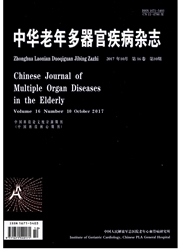

 中文摘要:
中文摘要:
动脉粥样硬化( AS)是心血管疾病重要的发病基础,是涉及多方面的复杂病理过程,主要病理机制是慢性血管炎症反应、平滑肌细胞增殖与迁移、细胞凋亡及新血管形成等,许多与炎症相关的标志物已被作为监测AS和心血管疾病风险的新靶点,其中抑瘤素M( OSM)在AS中的作用逐渐受到重视。现已证实OSM除了在黑色素瘤、肝脏再生和慢性炎症如风湿性关节炎、肺和皮肤炎性疾病中具有生物效应,在AS疾病中也发挥作用,本文对OSM在AS发生发展中的作用进行了综述。
 英文摘要:
英文摘要:
Atherosclerosis ( AS) is one of important basic pathogeneses of cardiovascular diseases , with a variety of complex aspects of pathological processes involved .Chronic vascular inflammatory response , proliferation, migration, and apoptosis of smooth muscle cells and neovascularization are involved in the pathogenesis and development of AS .Many inflammation-related biomarkers have been confirmed as new targets for detection of AS and cardiovascular disease risk .In these biomarkers , oncostatin M ( OSM) has attracted more and more attention .Evidence shows that OSM not only exerts biological effects on melanoma , liver regeneration and chronic inflammations such as rheumatoid arthritis , and lung and skin inflammatory diseases , but also plays important role in AS .In this article, we reviewed the roles of OSM in the pathogenesis and development of AS .
 同期刊论文项目
同期刊论文项目
 同项目期刊论文
同项目期刊论文
 期刊信息
期刊信息
